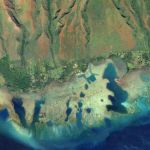NATIVE SPECIES

2022 SURF Projects
Five students completed projects in climate adaptation science for the 2022 SURF program, investigating fire-prone invasive grasses, spillover effects of Marine Protected Areas, shifts in estuarine fish biodiversity, optimal regeneration conditions for koa, and effects of marine warming on different phytoplankton strains.
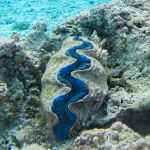
Genetic assessment of giant clam stocks in American Samoa
PI: Robert Toonen, Research Professor, Hawai‘i Institute of Marine Biology, UH Mānoa
Graduate Scholar: Paolo Marra-Biggs, Department of Marine Biology, UH Mānoa
Funded: FY2022
Graduate Scholar: Paolo Marra-Biggs, Department of Marine Biology, UH Mānoa
Funded: FY2022
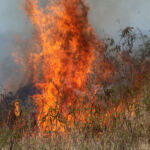
Weed Fire Risk Assessment Database
With the increase in wildfire prevalence and risk across Hawaiʻi, information in this database on the relative risk posed by non-native plants will be invaluable to land managers in prioritizing their weed control efforts.
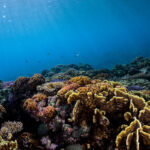
Coral resilience mapping in Guam and American Samoa
This tool provides GIS map layers to illustrate the growth and survivability of corals under several future climate scenarios for reefs in Guam and American Samoa.

Prioritization planning for coastal wetland restoration on Molokaʻi
PI: Judith Drexler, Research Hydrologist, USGS California Water Science Center
Co-Is: James Jacobi, Biologist, USGS Pacific Island Ecosystems Research Center; Curt Storlazzi, Research Geologist, USGS Pacific Coastal and Marine Science Center
Funded: FY2021
Co-Is: James Jacobi, Biologist, USGS Pacific Island Ecosystems Research Center; Curt Storlazzi, Research Geologist, USGS Pacific Coastal and Marine Science Center
Funded: FY2021

2021 SURF Projects
Six students completed projects in climate adaptation science for the 2021 SURF program, investigating stream flow quality and variability, coastal erosion, fish thermal tolerance, fishpond phytoplankton distribution, and reef microplastics.
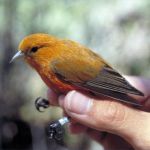
Predicting and mitigating avian disease at Hakalau Forest National Wildlife Refuge
PI: Dennis LaPointe, Research Ecologist, USGS Pacific Island Ecosystems Research Center
Funded: FY2021
Funded: FY2021
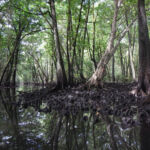
Mangrove vulnerability to sea-level rise factsheet
Mangrove forests and the benefits they provide to Micronesian ecosystems and communities are threatened by accelerating sea-level rise and human activities. Read this factsheet to learn more.

Effect of extreme tidal events on future sea-level rise scenarios for He‘eia fish communities
PI: Yoshimi Rii, Research Coordinator, He'eia NERR/HIMB, UH Mānoa
Co-Is: Rob Toonen, Research Professor, HIMB, UH Mānoa; Kawika Winter, Reserve Manager, Heʻeia NERR/HIMB, UH Mānoa
Funded: FY2021
Co-Is: Rob Toonen, Research Professor, HIMB, UH Mānoa; Kawika Winter, Reserve Manager, Heʻeia NERR/HIMB, UH Mānoa
Funded: FY2021


